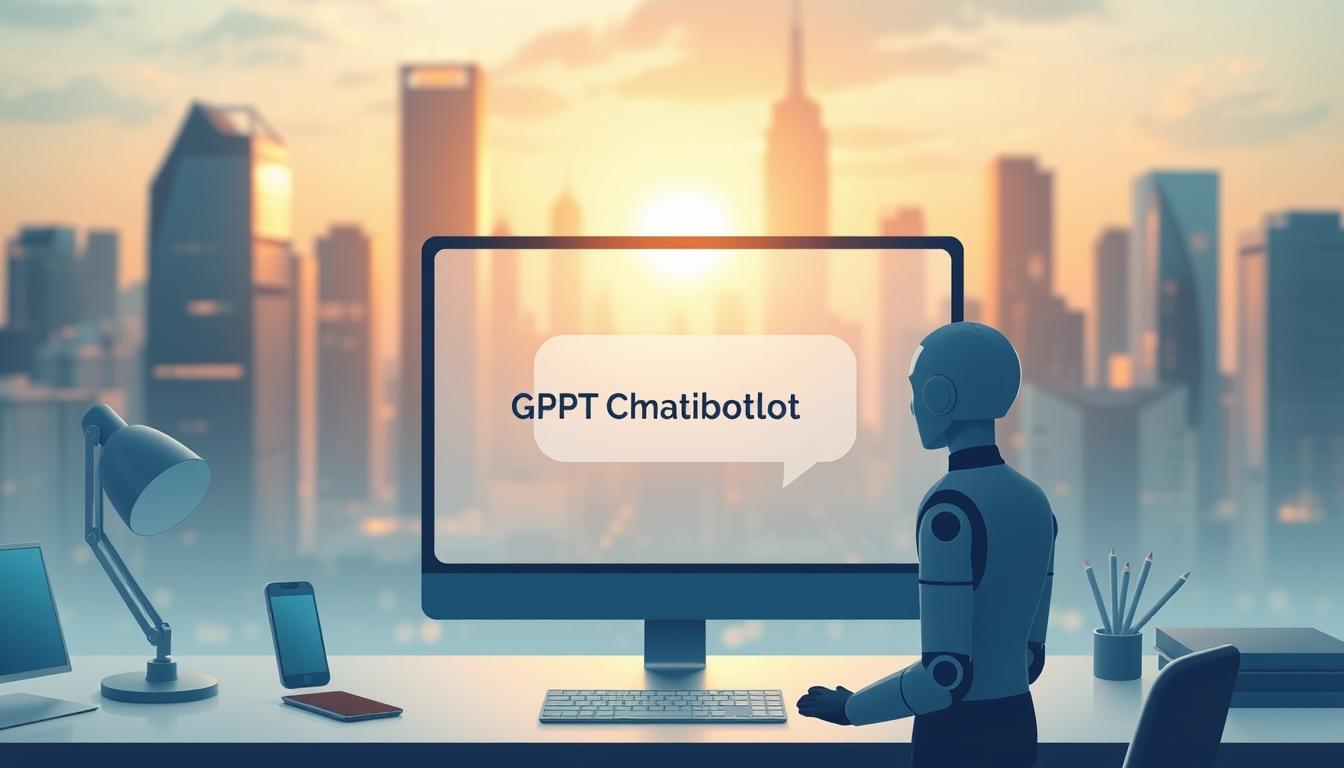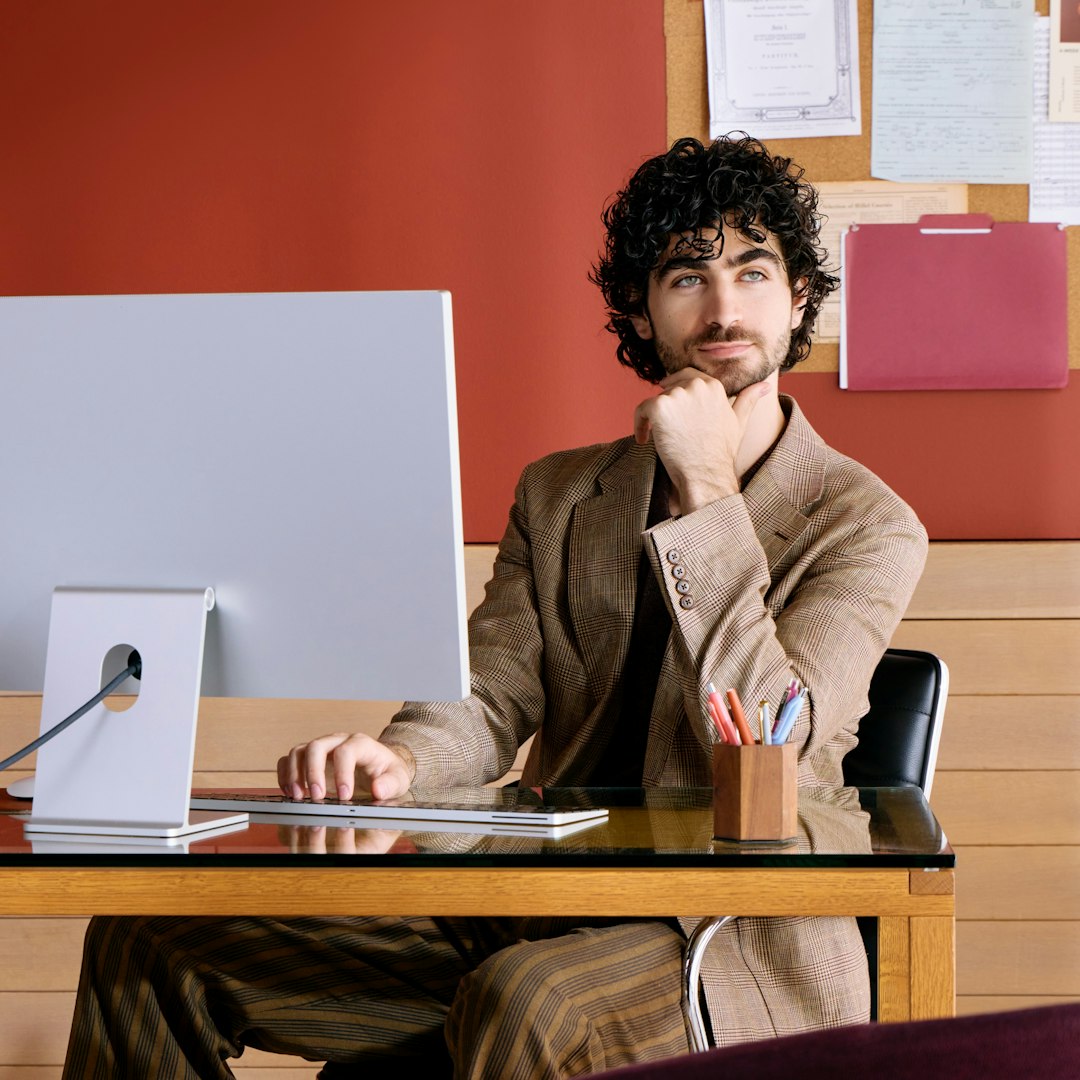“Can AI Replace Graphic Designers? AI vs designer in 2025”
The graphic design world is on the verge of a big change. Artificial intelligence is becoming a key part of design work. A recent survey found that over 60% of graphic designers think AI will change their job a lot in the next few years.
This makes us wonder: will AI take over graphic designers’ jobs, or will it help them do better work? As we look ahead, it’s clear that AI is meant to work with humans, not replace them. It’s a tool that can make graphic design better, not a substitute for human creativity.
Key Takeaways
- The role of graphic designers is evolving with the integration of AI.
- AI is not a replacement for human creativity in graphic design.
- The future of the design industry will be shaped by human-AI collaboration.
- Graphic designers will need to adapt to working with AI tools.
- The demand for creative and strategic thinking in graphic design will continue.
Exploring the Role of AI in Graphic Design
Artificial intelligence (AI) is transforming the graphic design industry in profound ways. By leveraging advanced algorithms and machine learning, AI tools are capable of automating repetitive tasks, freeing up designers to focus on more creative and strategic work. This shift is not only improving efficiency but also opening up new avenues for innovation and collaboration.
Automating Repetitive Tasks
AI in graphic design has made it possible to automate tasks that were once time-consuming and labor-intensive. From basic design elements to complex layouts, AI tools can handle these tasks with precision and speed. This automation allows designers to concentrate on high-value tasks that require creativity and human intuition.
Enhancing Creativity and Collaboration
While AI excels in automating tasks, it also plays a significant role in boosting creativity and collaboration. AI tools can analyze vast amounts of data and generate unique design concepts that might not have been possible through traditional methods. This not only enhances the creative process but also fosters collaboration between designers and AI systems, leading to more innovative and effective designs.
By integrating AI into their workflows, graphic designers can unlock new levels of productivity and creativity. This integration is not just about automating tasks but also about leveraging AI’s capabilities to enhance the overall design process.
Understanding AI in Graphic Design
AI is changing graphic design a lot. It helps designers do less repetitive work and focus more on being creative. This is thanks to AI design systems.
Machine learning in graphic design has made a big difference. It lets designers use tools that get better over time by learning from data.
How Modern AI Design Systems Function
Modern AI design systems use machine learning algorithms to work. They can handle lots of data. This lets them make designs based on what they’ve learned from other designs.
Machine Learning vs. Traditional Design Software
AI design tools are different from old design software. Old software follows set rules. But AI tools can change and grow based on what they learn. This makes them great for creative and custom tasks.
Data-Driven Design Processes
AI design processes rely on data. They use big datasets to make design choices. This way, designs are not just pretty but also fit well for certain situations and people.

Leading AI Design Platforms in 2025
In 2025, some AI design platforms will be at the top. They can do things like adjust layouts automatically or come up with new design ideas. These platforms are very powerful.
Knowing how these platforms work can help designers use AI better. This way, they can keep up with the fast-changing design world.
AI vs Designer: The Core Battle of Creativity and Execution
The debate between AI and human designers centers on creativity and technical skill. It’s a complex issue, comparing human intuition, AI’s patterns, speed, precision, and flexibility. Can AI truly replace graphic designers?
The automated vs manual design process is key. AI has improved in creating design ideas, but the human touch is vitalfor impactful designs. Human designers offer imagination, empathy, and problem-solving skills that AI can’t match.
Creative Thinking: Human Intuition vs. Algorithmic Patterns
Human designers use their experiences, emotions, and cultural understanding to create designs that connect with people. AI, on the other hand, relies on algorithmic patterns and data, lacking the emotional and original touch of humans.
AI can process lots of data and spot patterns, but it’s limited by its programming and training data. Human designers can break rules, innovate, and think differently than AI.
Technical Execution: Comparing Speed, Precision, and Adaptability
AI shines in speed and precision, automating tasks, generating designs fast, and ensuring consistency. Yet, human designers are more adaptable, adjusting to feedback, changing needs, or unexpected issues.
AI and human designers can work together. AI can handle quick, precise tasks, freeing human designers to focus on creative decisions and strategy. This collaboration can improve the design process.
Pros of AI in Graphic Design
AI is changing graphic design in many ways. It brings benefits to designers and businesses. AI tools make the design process more efficient, cost-effective, and accessible.
Enhanced Efficiency and Productivity
AI helps designers by automating repetitive tasks. This lets them focus on creative work. As a result, designers are more productive.
Automation of Repetitive Design Tasks
AI tools can handle tasks like resizing images and formatting text. Designers can then spend more time on creative decisions.
Rapid Prototyping and Iteration
AI lets designers make many design versions quickly. This is great for fast idea testing and improvement. It’s perfect for meeting tight deadlines.

Cost-Effectiveness for Businesses
AI makes graphic design more cost-effective for businesses. It saves time and money on labor costs.
Here’s how AI can save money compared to traditional design:
| Design Process | Time Required | Cost |
|---|---|---|
| Traditional Design | Several days | High |
| AI-Integrated Design | A few hours | Low |
Democratizing Design for Non-Professionals
AI has made design more accessible to everyone. Now, people without design experience can make professional-looking graphics.
This change helps small businesses and individuals. They can make their own marketing materials and logos without hiring a designer.
Cons of AI in Graphic Design
AI in graphic design has many downsides. As we use AI more, we must know and deal with these issues.
Creative Limitations and Originality Concerns
AI can’t fully match human creativity and originality. It uses patterns and algorithms to make designs. But, it misses the unique and innovative ideas humans bring.
This can make designs seem generic or lacking in a special touch.
Key issues with AI-generated designs include:
- Limited contextual understanding
- Inability to fully grasp brand identity nuances
- Over-reliance on existing design patterns
Loss of Human Touch and Emotional Intelligence
AI systems lack the emotional understanding and empathy of human designers. This can make designs fail to connect with people on an emotional level. Humans can tap into human emotions and create designs that stir feelings, something AI can’t do yet.
Technical Constraints and Ethical Considerations
Using AI in graphic design also brings up technical and ethical problems. Two big ones are copyright and ownership, and bias in AI designs.
Copyright and Ownership Issues
With more AI designs, questions about who owns them arise. Is it the AI developer, the person who set the parameters, or someone else? This confusion can lead to legal fights over who owns the design.
Bias in AI-Generated Designs
AI designs are only as good as the data it’s trained on. If the data has biases, the designs will too. This can lead to designs that are culturally insensitive or discriminatory, harming brands and pushing away their audience.
| Issue | Description | Impact |
|---|---|---|
| Creative Limitations | Lack of originality and nuance in AI-generated designs | Generic designs that lack unique touch |
| Loss of Human Touch | AI’s inability to understand human emotions and subtleties | Designs that fail to resonate emotionally with the audience |
| Technical and Ethical Concerns | Issues with copyright, ownership, and bias in AI designs | Legal challenges, intellectual property disputes, and culturally insensitive designs |
In conclusion, AI can change graphic design, but we must know its limits and drawbacks. By understanding these, we can use AI and human designers together more effectively.
Will AI Replace Graphic Design Jobs in 2025?
Will AI change graphic design jobs in 2025? Or will it help designers do their jobs better? The answer depends on how AI changes the design world.
The start of machine learning in graphic design has brought both hope and worry. AI has grown a lot, but we need to see how it affects jobs.
Job Displacement vs. Job Transformation
AI in graphic design worries some about losing their jobs. But, history shows tech changes jobs, not just takes them away.
AI is taking over simple tasks, letting designers work on creative tasks. This change could make design jobs more strategic and creative.

Emerging Roles in the AI-Design Ecosystem
AI is changing graphic design, creating new jobs that mix human creativity with AI’s speed.
AI Design Specialists
AI design specialists are new roles. They teach AI to understand design, making sure it gets the art and beauty right.
Human-AI Collaboration Experts
Another key role is human-AI collaboration experts. They help designers work well with AI, using each other’s strengths.
The future of the design industry will be about working together with AI. This will lead to new creativity and innovation.
Is Pursuing Graphic Design Worth It in 2025?
As we look at graphic design in 2025, a big question is: is it worth it? The answer depends on how technology for graphic designers has changed the field.
AI has changed how we design. It can do some tasks fast and well. But, human designers add creativity and feeling. To stay important, designers need to learn how to work with AI.
Essential Skills for Designers in an AI-Dominated Market
In a world where AI is big, designers must focus on what humans do best. They need to understand people, communicate well, and work with others. This way, they can use AI to make new and good designs.
Some important skills are:
- Creativity and originality
- Emotional intelligence and empathy
- Strong communication and collaboration skills
- Ability to work with AI-powered design tools
Career Paths and Specializations with Staying Power
AI might change some design jobs, but it also brings new chances. Some new areas to explore are:
Designers can choose careers that focus on what humans do well. Like UX/UI design, branding, and strategy. By doing this, designers can keep up and even do well in an AI world.
The Future of Human-AI Design Collaboration
The future of graphic design is exciting. It combines human creativity with AI’s power. AI won’t replace designers but make their work better and faster.
Successful Collaborative Workflows
To use AI well in graphic design, we need good teamwork. Integrating AI tools into design helps a lot. Designers can do creative work while AI handles the routine tasks.
AI can start with design ideas based on what designers want. This makes the design process quicker. Designers can then improve their ideas faster.
| Task | Human Designer | AI Tool |
|---|---|---|
| Conceptualization | Provides creative direction | Generates initial concepts based on parameters |
| Design Refinement | Refines and iterates on designs | Assists with precision tasks, such as formatting |
Real-World Success Stories: Designers Thriving with AI
Many designers and companies are doing great with AI. For example, Adobe uses AI in its Creative Cloud. It helps with editing and creating content.
AI has helped small design firms compete with big ones. It automates simple tasks. This lets small firms focus on creative work.
By working with AI, designers can do more creative work. They can make amazing visuals that tell strong stories.
Looking Beyond 2025: The Next Frontier
The future of graphic design is being shaped by new technologies. These advancements will change the profession in big ways. It’s important to know about these emerging technologies and how they will shape the design industry.
Emerging Technologies Shaping Design’s Future
The graphic design industry is on the verge of a big change. Technologies like augmented reality (AR) and virtual reality (VR) are leading this transformation. They’re changing how designers work and interact with clients and audiences.
AR and VR allow designers to create immersive experiences. These experiences were once impossible to imagine.
Also, machine learning and AI are making the design process more efficient and innovative. These technologies are being integrated into design workflows. This is expected to boost creativity and productivity.
Preparing for the Next Wave of Innovation
To succeed in this changing world, graphic designers need to keep learning and adapting. They must stay updated with the latest technologies and understand how to use them. Designers should also work on skills like creative problem-solvingand strategic thinking.
By embracing these new technologies and improving their skills, designers can not only survive but also thrive in the future of the design industry.
Conclusion
Graphic design in 2025 is changing fast, thanks to artificial intelligence. The big question is: will AI take over graphic designers’ jobs? The answer is not a simple yes or no. Instead, it’s about finding a balance between human creativity and AI’s efficiency.
In this new era, graphic designers are more important than ever. They are the visionaries and strategists behind the scenes. AI tools are making design faster and more accessible to everyone. But, the heart of graphic design – creativity, feeling, and intuition – is something only humans can do.
The future of graphic design will be a mix of human and AI collaboration. By using AI, we can open up new possibilities and make design better. The secret to success is to use AI wisely and keep the human touch alive in our work.
FAQ
Will AI completely replace human graphic designers?
AI has advanced a lot in graphic design. But, it won’t replace human designers fully. AI will help with routine tasks, letting designers focus on creative decisions.
What are the benefits of using AI in graphic design?
AI in graphic design boosts efficiency and cuts costs. It also makes design more accessible to non-professionals. AI tools automate tasks, saving time and money, and opening design to more people.
Can AI design tools produce high-quality designs?
AI design tools have improved a lot. They can create designs that look good. But, they lack the depth and emotional touch that human designers add.
How will AI impact graphic design jobs?
AI will change graphic design jobs, making some tasks automated. This will free up designers to focus on creative work. New roles, like AI trainers and design technologists, will also appear.
What skills do graphic designers need to stay relevant in an AI-dominated market?
Graphic designers need skills that AI can’t replace. They should focus on creativity, problem-solving, and emotional intelligence. Keeping up with design tech, including AI tools, is also key.
Can non-designers use AI design tools effectively?
Yes, non-designers can use AI design tools well. They are easy to use and automate tasks. But, the quality of the design depends on the user’s design knowledge and direction.
What is the future of human-AI design collaboration?
The future will see humans and AI working together. Humans will handle creative decisions, while AI does routine tasks. This will lead to better designs.
Are there any technical or ethical concerns associated with AI in graphic design?
Yes, there are concerns like AI bias, data security, and intellectual property. Designers and businesses must address these issues to ensure fair and secure design practices.
How can designers prepare for the next wave of innovation in graphic design?
Designers should keep up with design tech and develop AI-complementary skills. They should also be open to new methods and workflows. Staying informed about emerging tech, like AR and VR, is also important.





